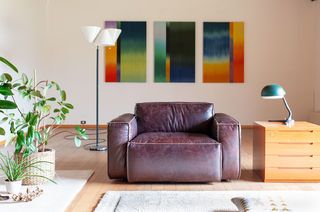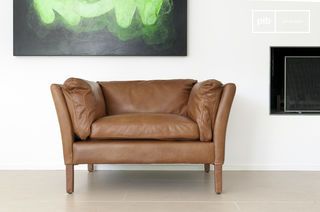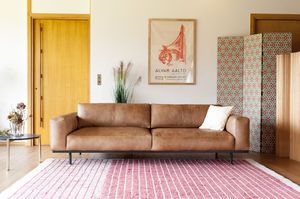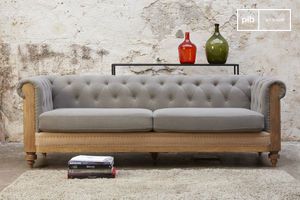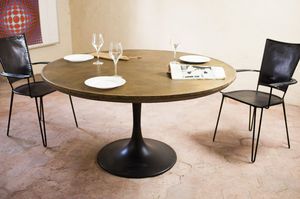Designer armchairs
Design armchairs occupy a precise place in interior design: that of a legible volume, sitting on clean lines. The design chair stands out for its formal structure, its mastery of proportions and its clear relationship to the rest of the furniture. It acts both as a secondary seat and a spatial landmark. Depending on the material, it can be part of a continuity or introduce a measured contrast. Its positioning depends on circulation, visual perspectives and intended use. read more >
Filters
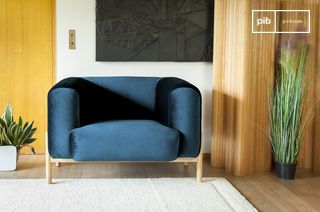
Blue velvet armchairViela
£1210 £845-30%
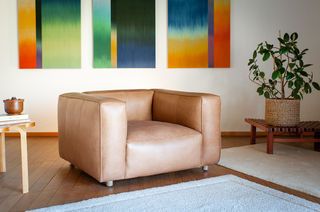
Camel leather armchairKrieger
£3020 £2570-15%
Summer Sale
Up to 30% off a wide selection of chairs, furniture, and lighting.
Offer valid while stocks last.
Best-Sellers

A design armchair as a point of balance in the room
The design armchair is not intended to fade into the background. It is an autonomous volume, designed to occupy a defined space without unbalancing the overall composition. Its shape expresses an intention: enveloping, angular, low or slender. It must respond to a design logic, but also to a principle of visual legibility. Placed in a living room, office or bedroom, the designer armchair often serves as a pivot: it introduces additional seating while structuring circulation. Its effectiveness relies on its right scale in relation to the rest of the furniture, neither oversized nor lost in the volume.
Materials, finishes and perception of form
The choice of materials contributes to the reading of the armchair. A rigid shell emphasizes clean contours. A taut fabric enhances supple lines. The sled, compass or central base acts as a graphic base that contributes to the whole. Design armchairs don't combine materials randomly: each combination must reinforce formal clarity. Finishes must be consistent with the environment: natural wood on mineral flooring, lacquered metal on dense carpet, light fabric on dark upholstery. The aim is not variety, but the precise articulation of textures in space.
Design armchair and articulation with other elements
A design armchair doesn't stand alone. It works with a nearby coffee table, light fixture, sofa or bookshelf. Its orientation is often strategic: opening towards a focal point, framing a perspective or defining a reading zone. To maintain a legible hierarchy, it's best to avoid formal duplication or equivalent volumes that are too close together. Two identical chairs can create symmetry. A single model can act as a visual punctuation mark. In all cases, the chosen form must remain active in the space, without producing a superfluous decorative effect.
The design chair is a seat with an extended role: daily use, visual impact, flow management. Its successful integration depends on precise placement, a measured dialogue with materials, and a rigorous overall logic.
The design chair is a seat with an extended role: everyday use, visual impact, flow management
